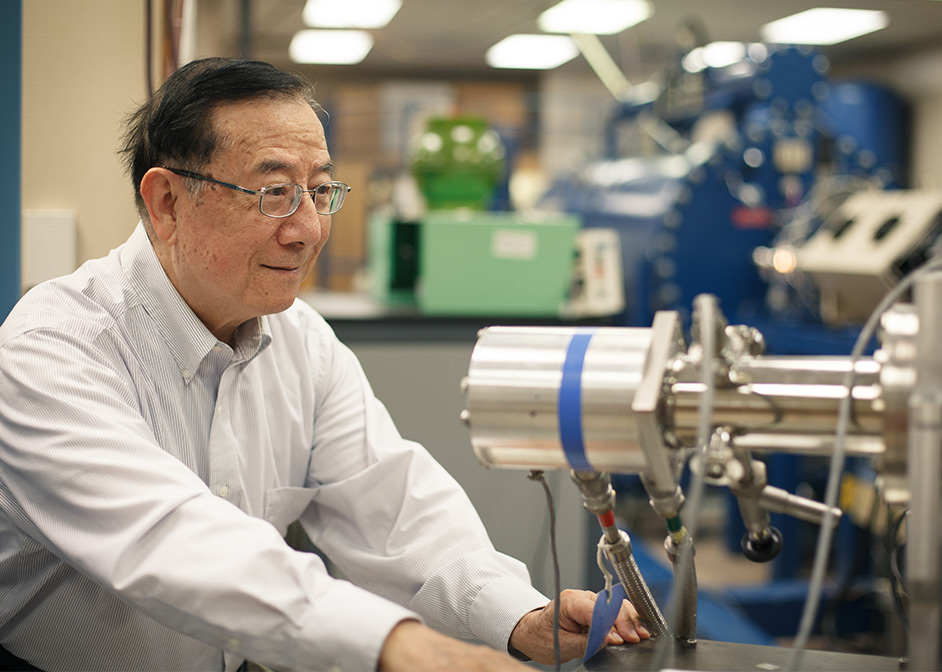Contributions to Field of Particle-Solid Interactions
A festschrift is a European tradition that honors an academic’s lifelong contributions to a field.

This August, many physicists from around the world will gather in Galveston to honor the contributions of Wei-Kan Chu, University of Houston Cullen University Professor of Physics. This festschrift will take place during the 10th Meeting on Recent Developments in the Study of Radiation Effects in Matter.
Critical Link for Understanding Particle-Solid Interactions
As a graduate student and postdoctoral researcher in physics at Baylor University, Chu came up with a method to calculate the energy loss of a charged particle in matter. With this, he provided a critical link to the understanding of particle-solid interactions, one that laid the foundation for key advances in science and technology.
“Before, calculating the ionization energy loss for an ion in a single element took weeks,” said Chu, who has been a faculty member in the College of Natural Sciences and Mathematics since 1989. “With the charge density integration method I developed, I was able to complete the ionization energy for all 100 elements in a single day.”
This calculation was the missing link needed to establish the depth scale for Rutherford backscattering spectrometry, which is used to analyze the structure and composition of materials.
In 1972, after finishing his Ph.D., Chu became a researcher at the California Institute of Technology, where he worked with professors James Mayer and Marc Nicolet. In 1978, Chu, along with Mayer and Nicolet, co-authored the book ‘Backscattering Spectrometry.’ The book was given the nickname ‘the purple bible,’ due to the cover’s color.
Based on a paper Chu co-authored, this book became the leading resource for ion beam labs around the world to learn about Rutherford backscattering spectrometry.
Enabling Industrial Applications: Analyzing and Modifying Materials
This understanding of particle-solid interactions also enabled numerous industrial applications. One application included the ability to dope silicon, which is the process of adding in foreign elements as a way of changing its properties. This step is crucial for forming microcircuits on silicon chips.
“When you inject a foreign particle into a host material, you change the surface property of that material,” Chu said.
One application for Chu’s mean ionization calculations is in calculating radiation therapy for tumors. Radiation therapy works by targeting an ion beam at a tumor, with its efficacy dependent upon knowing the depth of the tumor, as well as the energy loss of the ion beam.
A Long-Lasting Legacy
In the years since Chu’s discovery, he went on to have a long, successful career, first in industry, then as a faculty member, where he focused on ion-beam characterization and ion-beam modification of materials. During this time, he mentored over 30 graduate students who finished their Ph.D., published more than 400 journal articles, served as editor of four books, and received 29 patents.
“I feel very rewarded,” Chu said. “To be recognized by your peers is really something.”
- Rachel Fairbank, College of Natural Sciences and Mathematics